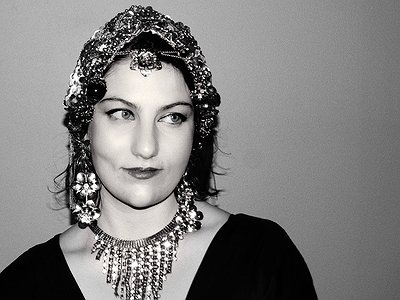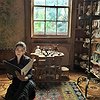Part 1
Name: Cevanne Horrocks-Hopayian
Occupation: composer
Nationality: British-Armenian
Current Release: Welcome Party on NMC Recordings
Recommendations: ‘The Colour of Pomegranates’, 1969, directed by Sergei Parajanov / ‘The World Is a Window: Making The Colour of Pomegranates’, 2011, Daniel Bird.
If you enjoyed this interview with Cevanne, visit her website www.cevanne.org to buy music and book tickets to events
When did you start writing/producing music - and what or who were your early passions and influences? What was it about music and/or sound that drew you to it?
I was drawn to music as a child even though I had 60% hearing loss at the time, and it hurt to hear. Possibly the first time I wrote for another ensemble was thanks to the Aldeburgh Jubilee Opera — a local community project founded by Benjamin Britten and collaborators in England. The company found a way to include me when I was ill, aged 9 or 10. I wrote a few lines of melody for their new setting of Alice in Wonderland, and my helpful mum delivered the score while I had to stay at home!
For most artists, originality is preceded by a phase of learning and, often, emulating others. What was this like for you: How would you describe your own development as an artist and the transition towards your own voice?
Rather than imitation, I can see a pattern of reflection — like the moon to the sun! I don’t think I’ve stopped reflecting on the work of others. I studied musicology at university, so I was not exposed to the conservatoire structures of apprenticeship which might have influenced me. I am surprised when conservatoire students ask me how I “found my voice”, when it’s never something I felt I had to do, perhaps due to my relative isolation and ignorance. It took me a long time to fill the gaps in my practical knowledge, as a result of my education, so I offer shadowing opportunities to redress this balance for the next generation of composers.
How do you feel your sense of identity influences your creativity?
I seek out stories relating to my local surroundings, as they often date back through international history and uncover universal truths. On the Welcome Party album, pieces like Swallows & Nightingales, or Dancing Birds explore the constant migration of birds. I also create ‘event scores’ which resemble forgotten rituals from my English and Armenian heritage, but are often completely invented…
Women have been excluded from composition for generations due to legal, social, and economic constraints. My orchestral piece The Ladies is dedicated to many female trailblazers and pays homage to blues singer Bessie Smith.
What were your main creative challenges in the beginning and how have they changed over time?
In the beginning, I wanted to use all my creative ideas at once, as if they would expire otherwise! Learning how to simplify and clarify is a fairly typical challenge. Now I am better at saving the off-shoots of an idea as cuttings for a new piece. Another challenge of mine was to get over the fear of trial, error, and the unknown, even with a high-pressure commission. Now I strive to be content with doing my best in the circumstances, and move on to keep improving.
As creative goals and technical abilities change, so does the need for different tools of expression, be it instruments, software tools or recording equipment. Can you describe this path for you, starting from your first studio/first instrument? What motivated some of the choices you made in terms of instruments/tools/equipment over the years?
I began, and continue, with instruments I find ergonomic - voice, piano and lever harp (based on the native clarsàch), as well as a computer. Now I continue in a similar vein, extending these instruments with Ableton Live and wearable midi-controllers in collaboration with Crewdson. You can hear our efforts on the BRACE album (Accidental Records), and an EP coming out this year, Rites For Crossing Water.
Have there been technologies or instruments which have profoundly changed or even questioned the way you make music?
Thanks to the era I was born, I’m native to creative computer software, the internet, and remote collaboration, so much of my work feels like a continuation of that tradition. The most profound change to my work has been collaborating with professional musicians with disabilities who pioneer new electronic instruments. I led a music-dance film created remotely for the international conference for Arts, Health, and Wellbeing 2021, called Cap O’Rushes, with Clarence Adoo performing with his custom headset, and including Bournemouth Symphony Orchestra ‘BSO Resound’.
Collaborations can take on many forms. What role do they play in your approach and what are your preferred ways of engaging with other creatives through, for example, file sharing, jamming or just talking about ideas?
It depends on the collaborator. Crewdson and I speak on the phone and share files remotely, recording our creative ideas at home or outside gathering ‘found sounds’. When I collaborate across art forms — with filmmakers, choreographers, librettists — I tend to meet them, as it may take different attempts to translate our ideas to each other. In general, collaboration for me involves leaving space for others to contribute, and being ready to imagine viewing our collection of ideas from another angle entirely.






